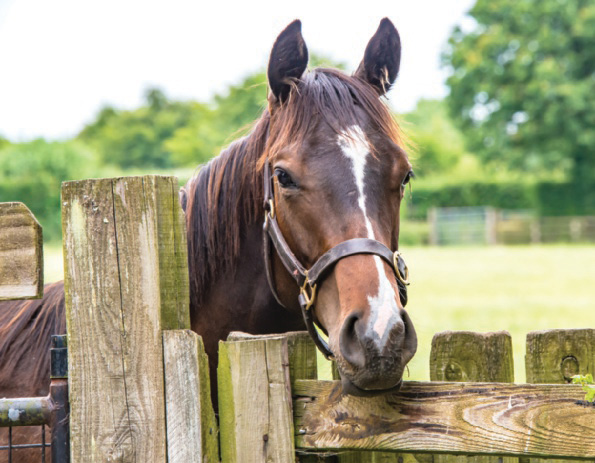Reproductive biotechnology company Memphasys claims its new Samson fertility diagnostic device can accurately predict pregnancy in mares after insemination

Following successful field trials, Australian-based bio-separations and reproductive biotechnology company Memphasys will now develop integrated production prototypes of the Samson device for field testing in the 2022 Australian breeding season. The company hopes to validate its predictive algorithm on a new population of standardbred and thoroughbred mares.
Memphasys has been developing the Samson device over the past 18 months and has undertaken field trials to test its ability to predict the chance of a pregnancy within an hour of a stallion-mare coupling, whether naturally or by artificial insemination (AI).
Thoroughbreds can only be legally bred using natural mating, not using AI, whereas other horses such as standardbreds can use AI.
Pregnancy in a mare can typically only be ascertained 14 days after coupling, by which time the mare may have missed her chance of pregnancy in the current oestrus cycle. Use of the Samson diagnostic has the potential to dramatically increase the overall mare pregnancy rates within the season.

Field trials
The Samson device was field trialled at thoroughbred and standardbred stud farms in NSW during the September to November 2021 Australian horse breeding season. The study was run by the University of Newcastle Reproductive Science department, led by Professor John Aitken.
Memphasys says the field trial demonstrated the ability of its device to provide accurate on-site pregnancy predictions, provided that a reasonable quality sample of the stallion ejaculate was collected.
High quality collections can routinely be achieved in standardbreds where all the ejaculate is first collected artificially before being used with AI to inseminate the mares. However, the dismount sample collected from thoroughbreds after natural mating is of poorer quality as it represents the end fraction of the ejaculate, which contains less and poorer quality sperm.
The Samson device combines measurement of semen parameters with an algorithm utilising other data, such as stallion age, to provide a predictive outcome.
For standardbred horses, using the same algorithm for all stallions, a pregnancy prediction accuracy of over 90% was achieved in the field trial.
For thoroughbred stallions, the analysis generated a predictive accuracy of 75% when all stallions’ data was combined. The company says this lower predictive accuracy is due to the poorer quality of thoroughbred dismount samples compared with standardbred AI samples.
However, Memphasys says it was able to improve pregnancy prediction accuracy to 80-90% for thoroughbred stallions when the Samson algorithm was optimised for each stallion by determining which variables are best used for each stallion to improve pregnancy prediction accuracy. Over time, a stallion’s fertility data could be aggregated to further improve the algorithm and its predictive capability.

Market potential
Memphasys sees significant potential for its Samson device given the large global breeding market, the high fees paid for successful fertilisation and the fact that stallion fertility can vary significantly over the breeding season. Weekly conception rates may be as low as 33% and as high as 100%, with typical average of 60%.
Timely pregnancy prediction can help ensure that fertilisation occurs within the mare’s short oestrus cycle, thereby increasing the possibility of a desired early pregnancy and for her improved likelihood of pregnancy during the season.
Further applications
As a by-product of the Samson device development, an accurate means of assessing total motile sperm count from a 0.5ml semen sample was also developed and validated for horses.
Memphasys says field trial data supports the potential diagnostic benefits of its device in the rapid assessment of semen quality in horses and possibly other valuable farm animals bred using AI such as cattle, sheep and pigs.

Next steps
Memphasys is now proceeding to develop an integrated production Samson device for further field testing in the 2022 Australian breeding season.
After validation is achieved, design and manufacturing will be fine-tuned in preparation for the devices to be sold. No regulatory approvals are required before the Samson device can be commercially sold.
Memphasys also plans to test a modified Samson device with bulls to determine if a similar pregnancy prediction capability could be developed for high value AI-bred dairy and beef cattle.















